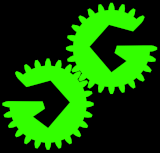HackRF Pro Q+A
This post is a collection of some of the first questions asked by the community about HackRF Pro shortly after we announced it. Questions were asked by folks across our various social media accounts and in our Discord server. The answers given here are expanded versions of how the folks on our team responded to the public question we observed.
Why is it called HackRF Pro and not HackRF Two?
We felt that “Pro” expressed the idea that this is a refinement of the HackRF One design and that “Two” would more likely be interpreted as a revolutionary design. Our goal was to make a better HackRF One, not to make something as revolutionary as HackRF One was when it was new. We did consider “10”, “360”, and “Tau”.
What is the baseband bandwidth of HackRF Pro?
In normal operation, HackRF Pro supports up to 20 Msps with 8-bit I and Q samples over USB, just like HackRF One. Internally, HackRF Pro uses a sample rate of up to 40 Msps with decimation and interpolation performed in an FPGA. At lower USB sample rates HackRF Pro supports an extended-precision mode with 16-bit samples and an effective number of bits (ENOB) of 9 to 11, depending on the sample rate. We’re also developing a half-precision mode that uses 4-bit samples at up to 40 Msps over USB.
Some tools allow tuning up to 7.25 GHz with HackRF One. Is the limit of 7.1 GHz on HackRF Pro correct or just “suggested”?
7.1 GHz is the highest tuning frequency that should work reliably with HackRF Pro. You can try tuning up to 7.25 GHz, but it may fail (as may HackRF One). Unlike HackRF One, the performance of HackRF Pro up to 7 GHz is pretty good. HackRF One is quite lossy above 6.1 or 6.2 GHz.
Will there be different host tools and libraries for interacting with HackRF One vs. HackRF Pro?
We’re adding features to libhackrf and hackrf-tools. In the future, there may be some software specially written for HackRF Pro, but we anticipate that most software will continue to support any HackRF (including Pro, One, Jawbreaker, and rad1o). Backward compatibility was our primary goal for HackRF Pro. We tried hard to find ways to enhance the HackRF One design without radical changes to the architecture that would make compatibility difficult.
Will the hardware design be published online before this starts shipping?
Yes, like all of our electronic designs, we will publish the entire hardware design under an open source license online before shipping HackRF Pro. Our mission at Great Scott Gadgets is to put open source tools into the hands of innovative people.
Does that mean no more cracking the case open to set up triggers?
That’s right! Both CLKIN and CLKOUT can be configured to connect internally to either the trigger input or trigger output signal.
Is HackRF Pro compatible with Portapack H4M ?
Yes, we’ve tested with H4M and a few other PortaPacks, including the original PortaPack H1 from ShareBrained Technology. To the best of our knowledge, HackRF Pro is compatible with all PortaPacks; however, we can’t guarantee this.
Will Opera Cake be improved so that it can take full advantage of HackRF Pro’s frequency range?
A new revision of Opera Cake is likely, but we are not working on it yet.
How is RF port protection enhanced on HackRF Pro?
HackRF Pro has the same reverse current protection diode on the RF port bias tee that is present on newer revisions of HackRF One. This has been quite effective in improving amplifier robustness in HackRF One r9 and r10. In addition to over-voltage protection provided by the diode, the bias tee on HackRF Pro features over-current protection. HackRF Pro has new amplifiers, replacing the obsolete part on HackRF One. ESD protection has been enhanced on HackRF Pro, and the RF port is also protected from high RF power by a PIN-Schottky limiter.
Will HackRF Pro be suitable for classroom use?
Yes. We even added a little feature with classroom use in mind: It is possible to hardware-disable transmit mode by cutting one trace on the PCB.
Do you have any projects in mind for the extended frequency range of HackRF Pro?
We’re excited to try HackRF Pro with new very low power (VLP) devices that operate in the 6 GHz band. We’ve already had success receiving WWVB at 60 kHz.

